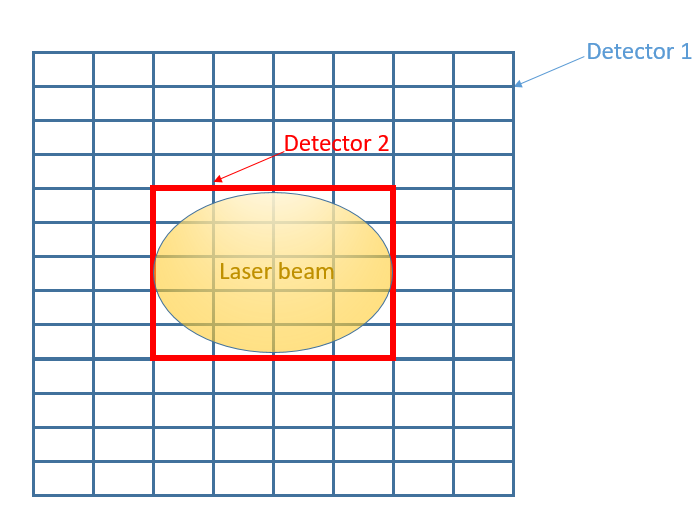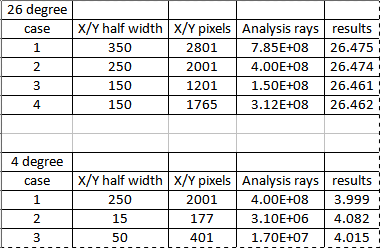Dear all,
I am trying to see the far field angular beam size (1/e2 width) in a simple system: source diode + detector rectangle.
- Suppose the detector is located 100mm away from the source diode (sets up only spatial distribution, ideal symmetric Gaussian beam in X- and Y- directions) center-to-center. What will be the necessary minimum of the set of half width/pixel number/analysis rays if I want to achieve 0.1 degree accuracy at 4 degree divergence? I was expecting the pixel resolution of 100*tan(0.1 degree) = 0.175mm but the setup of half widths 15mm/pixel number 89/analysis rays 8E5 didn’t work (I got 4.33 degrees while I set up divergence of 4 degrees). I chose 15mm half widths because in the detector spatial cross-section view the tails sort of decrease to 0 (well, decrease to 0.073% of the peak) at 15mm radius. Then I chose 89 pixels because 15/0.17=88.2. And I chose analysis rays 8E5 because 89*89*100=7.9E5.
- The detector rectangle half widths and pixel numbers determine the detector mesh, to the best of my knowledge. Will detector 1 and detector 2 shown below with the same mesh cell size yield the same result (far field 1/e2 width) for the same sufficient analysis rays (=100 rays/pixel)?

Regards,
Jiang




